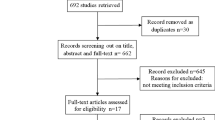Abstract
The prevalence of fasciolosis in sheep (Galicia, Northwest Spain) kept under field conditions was determined by using a sandwich-enzyme-linked immunosorbent assay (sELISA). Serum Fasciola hepatica circulating antigens were captured by means of a rabbit polyclonal IgG antibody to F. hepatica excretory/secretory products. Results were compared to those obtained by faecal sedimentation and an indirect ELISA (iELISA) and excretory/secretory antigens. Prevalences were 39.1% by sELISA, 30.4% by faecal sedimentation and 56% by iELISA; 83.3% of the sheep were positive to any one of the three tests. We observed that 59.5% of the sheep examined had active fasciolosis, 29.1% (117) had antigenaemia, 20.4% (82) passed eggs, and 40 (10%) were positive to both probes. We conclude that there is a high prevalence of fasciolosis in sheep from the studied region, and that the combination of sELISA and coprological sedimentation is extremely helpful for demonstrating current fasciolosis, so its application can be strongly recommended for epidemiological surveys.

Similar content being viewed by others
References
Abdel-Rahman SM, O´Reilly KL, Malone JB (1998) Evaluation of a diagnostic monoclonal antibody-based capture enzyme-linked immunosorbent assay coproantigen in cattle. Am J Vet Res 59:533–537
Almazán C, Ávila G, Quiroz H, Ibarra F, Ochoa P (2001) Effect of parasite burden on the detection of Fasciola hepatica antigens in sera and feces of experimentally infected sheep. Vet Parasitol 97:101–112
Boulard C, Bouvry M, Argente G (1985) Comparaison de la detéction des foyers de fasciolose par test ELISA sur lactosérum et sérum et par coproscopie. Ann Rech Vet 16:363–368
Bouvry M, Rau ME (1986) Seasonal variations in egg passage or Fasciola hepatica in dairy cows in Quebec. Vet Parasitol 22:263–273
Cornelissen JB, de Leeuw WA, van der Heijden PJ (1992) Comparison of an indirect haemagglutination assay and an ELISA for diagnosing Fasciola hepatica in experimentally and naturally infected sheep. Vet Q 14:152–156
Duménigo BE, Espino AM, Finlay CM (1996) Detection of Fasciola hepatica antigen in cattle faeces by a monoclonal antibody-based sandwich immunoassay. Res Vet Sci 60:278–279
Duménigo BE, Espino AM, Finlay CM, Mezo M (1999) Kinetics of antibody-based antigen detection in serum and faeces of sheep experimentally infected with Fasciola hepatica. Vet Parasitol 86:23–31
Dwinger RH, Le Riche PD, Kühne GI (1982) Fascioliasis in beef cattle in north-west Argentina. Trop Anim Health Prod 14:167–171
Espino AM, Marcet R, Finlay CM (1997) Fasciola hepatica: detection of antigenemia and coproantigens in experimentally infected rats. Exp Parasitol 85:117–120
Espino AM, Díaz A, Pérez A, Finlay CM (1998) Dynamics of antigenemia and coproantigens during a human Fasciola hepatica outbreak. J Clin Microbiol 36:2723–2726
Ferre I, Ortega-Mora LM, Rojo-Vázquez FA (1995) Seroprevalence of Fasciola hepatica infection in sheep in northwestern Spain. Parasitol Res 81:137–142
Hillyer GV, Soler de Galanes M, Buchón P, Buorland J (1996) Herd evaluation by enzyme-linked immunosorbent assay for the determination of Fasciola hepatica infection in sheep and cattle from the Altiplano of Bolivia. Vet Parasitol 61:211–220
Jemli MH, Escoula L, Magnaval JF, Dorchies P (1992) Exploration de la réponse immunitaire chez l'agneau infesté expérimentalement par Fasciola hepatica. Rev Med Vet 143:355–360
Kaplan RM (2001) Fasciola hepatica: a review of the economic impact in cattle and considerations for control. Vet Therap 2:40–50
López-Díaz MC, Carro MC, Cadórniga C, Díez-Baños P, Mezo M (1998) Puberty and serum concentrations of ovarian steroids during prepuberal period in Friesian heifers artificially infected with Fasciola hepatica. Theriogenology 50:587–93
Paz-Silva A, Pedreira J, Sánchez-Andrade R, Suárez JL, Díaz P, Panadero R, Díez-Baños P, Morrondo P (2002) Time-course analysis of coproantigens in rats infected and challenged with Fasciola hepatica. Parasitol Res 88:568–573
Rodríguez-Pérez J, Hillyer GV (1995) Detection of excretory-secretory circulating antigens in sheep infected with Fasciola hepatica and with Schistosoma mansoni and Fasciola hepatica. Vet Parasitol 56:57–66
Sánchez-Andrade R, Paz-Silva A, Suárez J, Panadero R, Díez-Baños P, Morrondo P (2000) Use of a sandwich-enzyme-linked immunosorbent assay (SEA) for the diagnosis of natural Fasciola hepatica infection in cattle from Galicia (NW Spain). Vet Parasitol 93:39–46
Sánchez-Andrade R, Paz-Silva A, Suárez JL, Panadero R, Pedreira J, Díez-Baños P, Morrondo P (2001) Effect of fasciolicides on the antigenaemia in sheep naturally infected with Fasciola hepatica. Parasitol Res 87:609–614
Sánchez-Andrade R, Paz-Silva A, Suárez JL, Panadero R, Pedreira J, López C, Díez-Baños P, Morrondo P (2002) Influence of age and breed on natural bovine fasciolosis in an endemic area (Galicia, NW Spain). Vet Res Commun 26:361–370
Acknowledgements
This work was supported by the projects XUGA 5070AC6064100 (Xunta de Galicia, Spain) and DCICYT 5070AI2864100 (Ministerio de Ciencia y Tecnología, Spain) and complies with the current laws for Animal Health Research in Spain. We thank B. Valcárcel for critically reading the manuscript and editorial assistance.
Author information
Authors and Affiliations
Corresponding author
Rights and permissions
About this article
Cite this article
Paz-Silva, A., Sánchez-Andrade, R., Suárez, J.L. et al. Prevalence of natural ovine fasciolosis shown by demonstrating the presence of serum circulating antigens. Parasitol Res 91, 328–331 (2003). https://doi.org/10.1007/s00436-003-0961-z
Received:
Accepted:
Published:
Issue Date:
DOI: https://doi.org/10.1007/s00436-003-0961-z




